“Community conservation work should be designated a sport,” Helen Lindsay believes, “Then it might get more funding.” Helen is Chair of the Otuwhero Wetland Trust and cites the (sporting) benefits of being part of a conservation volunteer team.
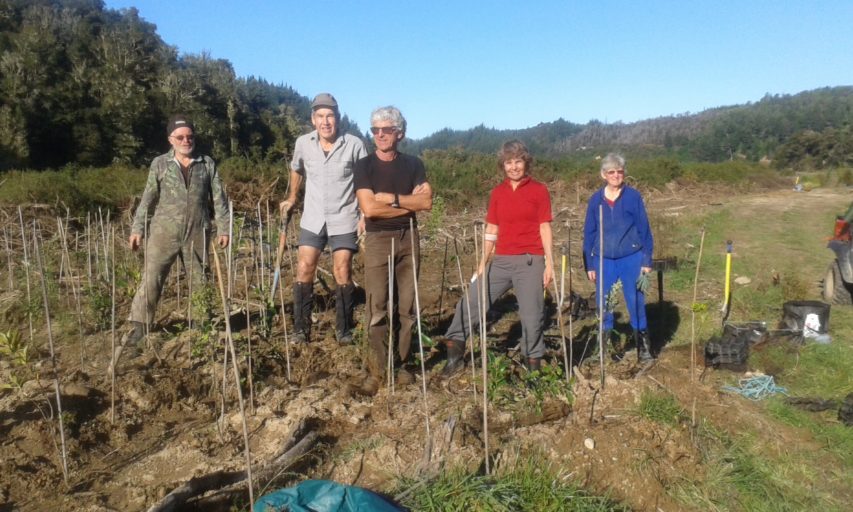
“It has good social benefits,” she says. “You’re working with people who have the same interests, it’s healthy working in the open, you’re contributing to conservation and its social and fun. A lot of people have just moved to our area – retired to the area perhaps – and been involved in conservation elsewhere. Volunteering is a way to meet people socially and have fun.”
Otuwhero Wetland is near Motueka, in the Tasman area at the top of the South Island. It has an intact vegetation sequence from saltmarsh to freshwater sedgeland to hill forest, a transition of unbroken vegetation, uninterrupted by man-made obstructions like roads.
“There are a lot of fernbird and some crake,” Helen says. “Bitterns aren’t established but they visit and there’s banded rail. The river is good whitebait habitatand there are giant kokopu, banded kokopu and inanga. Ecologists have rated it as being of high ecological value.”
Yet, when a restructured Department of Conservation determined priority areas for its limited conservation funding, Otuwhero Wetland missed out.
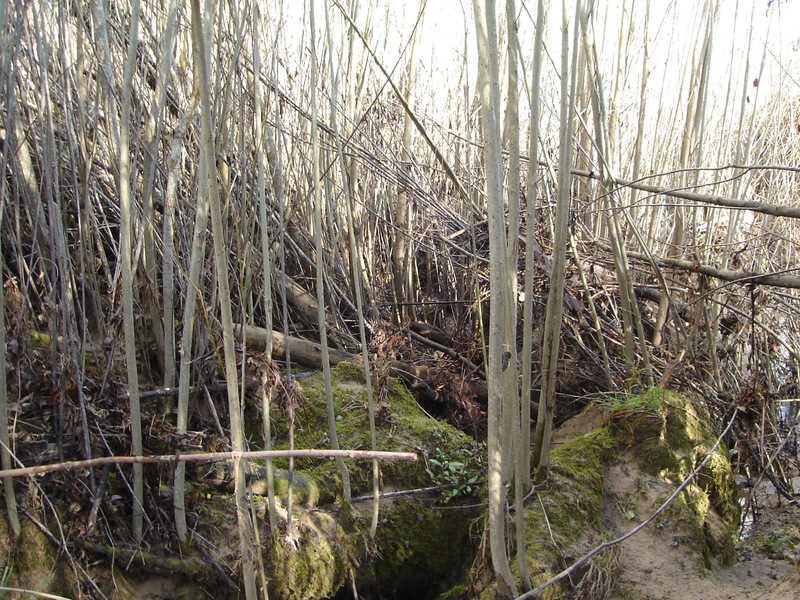
Helen doesn’t blame DOC for the oversight. Instead, the lack of a ‘priority’ rating became an opportunity for conservationists in the community.
“There is so little money. But a number of people in DOC management thought it would be a good opportunity for a volunteer group to get involved,” she explains. “So they approached the community about restoration of Otuwhero.”
With a background in restoration work, Helen was one of those approached. When not restoring wetlands in her weekends, she is Restoration Planting Supervisor for Project Janszoon.
“They also approached other people with a range of skills and the Otuwhero Wetland Trust was formed in 2011,” she says. “There are five Trustees in total.” Two of the current trustees, retired teachers Terry and Naomi Stanbridge, live close to the wetland and do a huge amount of the work.
The first big challenge the newly formed Trust faced was an infestation of willows.
“An area further up had been drained to form paddocks for stock. It had been fallow for years and was overgrown with gorse and the river alongside had a lot of willows,” Helen says. “They hadn’t been managed and were damming the river. Underneath the willows there was nothing but sand and mud. It was a mess!”
“A major part in the beginning of the restoration was removing the willows,” she says. “There was about 800 metres of willow infestation. They were ‘Bitter Willows’ which sucker and have thousands of very thin stems so you can’t drill into the trees to poison.. Machinery was needed to remove the trees and we needed to get resource consent. It wasn’t something we could do ourselves.”
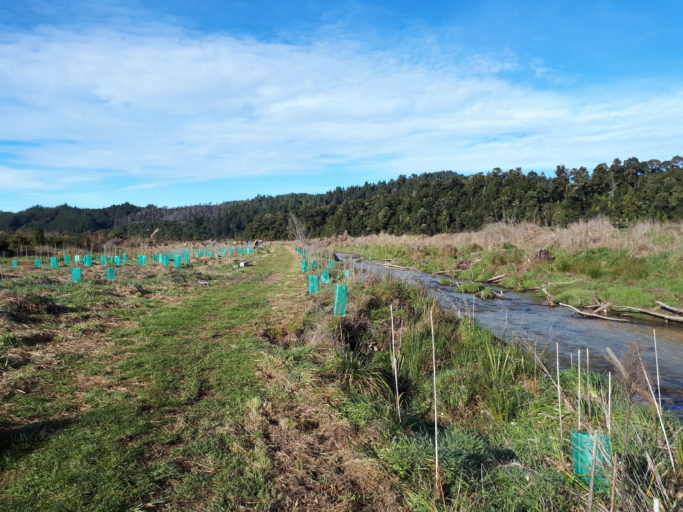
“By 2014 the willows were gone,” says Helen. “We started riparian planting. Gorse and blackberry also hadn’t been controlled on the drained area. We blocked some of the drains to make it wet again and planted 20,000 wetland shrubs and trees. Over 2076 trapped predators have also been removed – stoats, rats, cats, possums. Deer and pigs are also a problem, and local hunters sometimes shoot the deer.
Trust volunteers have set up traplines through the wetland and extended these to another 50 hectares of hill forest in the last two years.
“We’ve also poisoned 3500 mature pine trees,” Helen says.
Not bad going for a team of five trustees with a volunteer pool of around 40 people.
“About 10 volunteers are regularly involved in trapping,” says Helen “And when there’s a planting day we get lots of people. Schools and other organisations – like BNZ’s ‘Closed for Good’ – have also helped.”
The Trust also has regular working bees on a Friday with 6 or 7 volunteers.
“We made a decision to keep our group fairly small,” Helen says. “I’ve learnt from long involvement with groups that the more people you put out there, the more management is needed. We’re able to get on with the work and not have too much administration.”
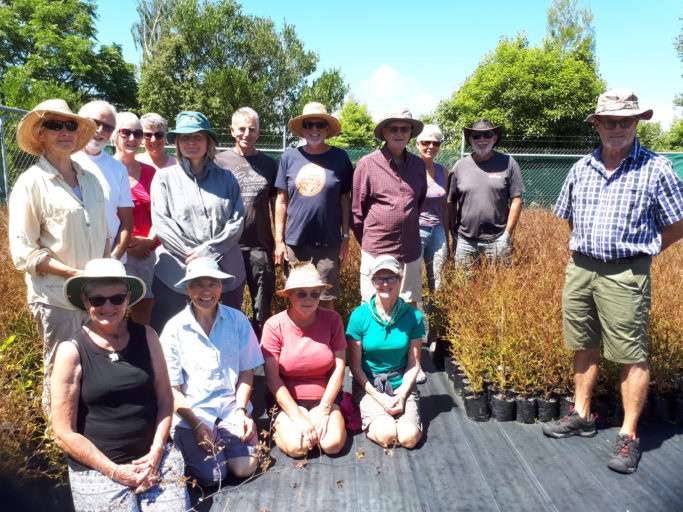
Another area of volunteer work is plant propagation. The DOC office in Motueka had a nursery where they propagated plants for the own landscaping and restoration projects. Helen saw an opportunity to expand it so that it was used to its full potential – and now the nursery not only supplies Otuwhero Wetland with plants, it’s also helping new volunteer groups get started on their own conservation projects.
“We have about twenty volunteers and some work there nearly every Monday. The group now propagates trees to help other groups starting off who don’t have money to buy trees. Once a group gets going it can apply to raise money, but to get funding it helps to have sometrack record,” Helen explains.
With a lot of background experience in working with volunteer teams, Helen has a few tips for encouraging volunteers and maintaining enthusiasm.
“The most important thing is that they have fun and that the work they do is something they enjoy.”
“Working in the nursery is not too hard,” she says, “Then if they show interest I gradually encourage people to more physical work. A lot of people say the same thing at first: ‘I want to do work, not go to meetings’. But once they get hooked on a project, they sometimes want to get involved in the decision-making.”
Fundraising is also less of an issue these days.
“Having raised the money to get the willows down, we don’t need a lot of funding now,” Helen explains. “We have very dedicated people who do all the work of propagating and planting the trees.”
With willows and gorse gone and planting well underway, everything seemed to be going well for the Otuwhero Trust. Then, in February 2018, along came Cyclone Gita!
“Cyclone Gita had a major impact on the project,” says Helen. “It affected many areas around the district. Tonnes and tonnes of logging slash came down the Otuwhero river and rolled over the wetlands. About 90% of it is pine, not natives – and it has big cuts in it, so it’s not natural. That year’s plantings were destroyed and half a metre of silt was deposited on top of everything. Now the trees we planted five years ago are suffocating! There’s one hectare covered in logging slash. It’s mind-boggling to see.”
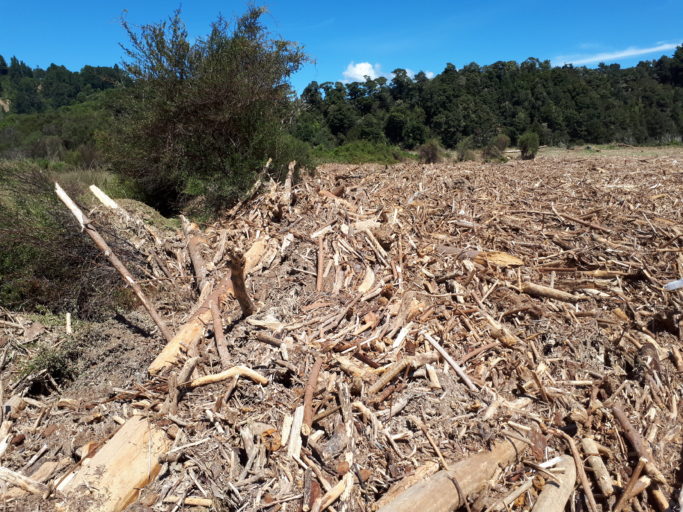
Other impacts of Cyclone Gita are only now becoming obvious.
“There’s a very weedy sedge species. The seeds were washed down the Otuwhero Valley and now the sedge is coming up all over the logging slash. And the willows were gone – but now pieces of crack willow that washed down are taking root,” says Helen. “We’ve been controlling these willows for the last year – getting them while they’re small. But they take a lot of time to find and kill. Gita had such a major impact that now we have a dilemma: how much work do we do in terms of planting if it could happen again?”
Cyclone Gita had a huge impact on the wider community as well.
“It had a big impact on farmland. Fenceposts and containers etc from farms washed into the wetland.,” she says. “What’s more,” she adds, “The logging companies have only done a small percentage of the cutting that is planned in the valley. They say they’re complying with regulations. It’s a big dilemma. The Council needs to make sure that it doesn’t happen again. We’ve been really set-back by Gita.”
Another tip Helen has for groups starting out, is ‘Don’t take on too much at once.’
“It can be good to build slowly,” she says. “If you’re doing something good, people will want to join. We had originally intended to start slowly, clearing and planting small areas,” she said, “But when we had to remove the willows, a large area needed to be planted quickly to reinstate vegetation around the river.”
So perhaps that tip should be: ‘Don’t take on too much IF you can possibly avoid it.”
“Otuwhero is a lovely place to be,” she concludes. “It’s easy to get people involved in things here and we’ve got a good group that gets on well. We have a rule that there’s no internal politics and conflict – there’s enough to battle on the outside – and we hope the work we’re doing is having a positive ecological impact.”

